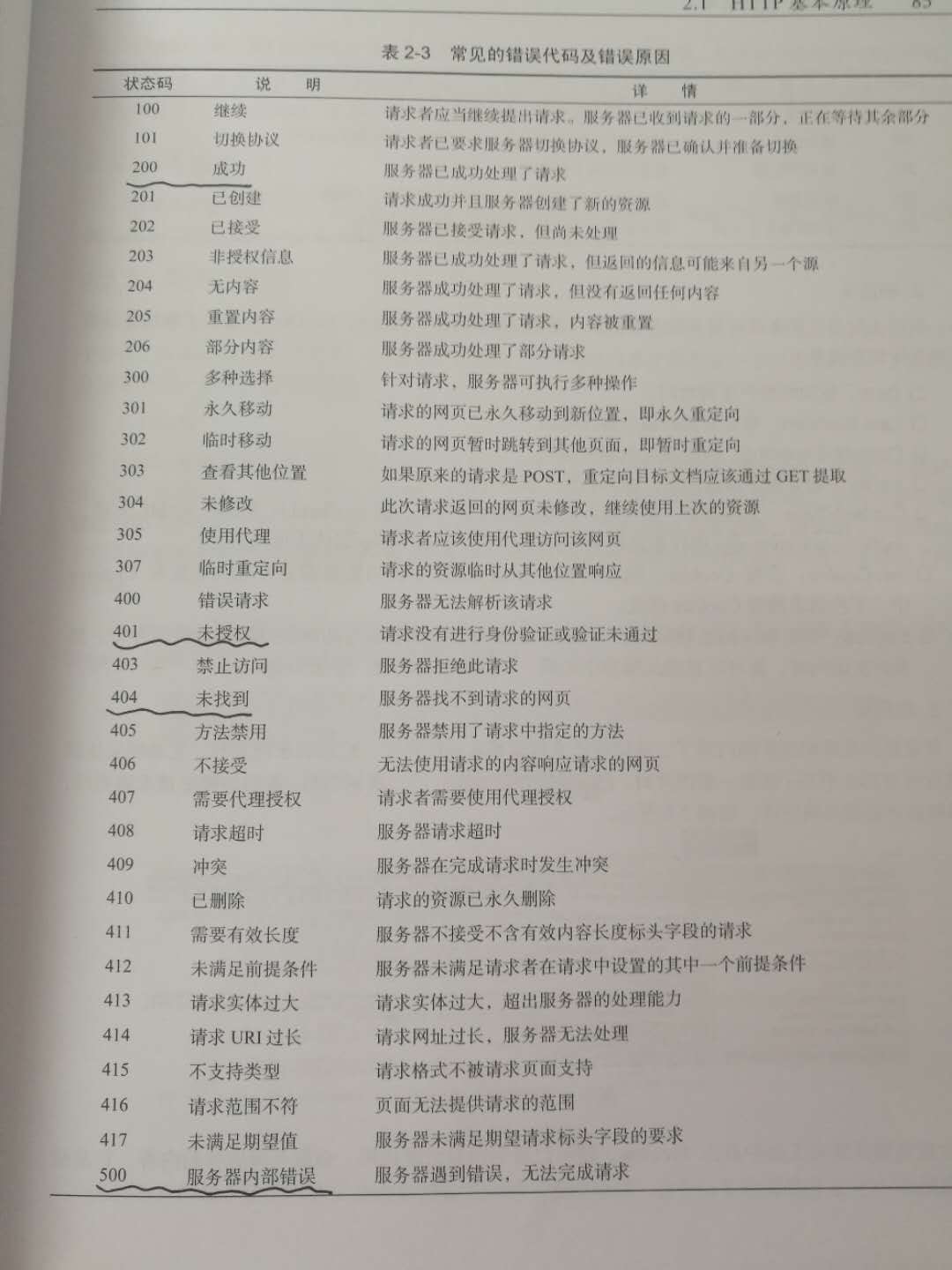之前,我们学习了基本库urllib的相关用法,但是在网页验证、Cookies处理等方面是比较繁琐的,需要用到Handler并且还需自己构建Opener。requests库的出现很好的解决了这个问题,下面让我们学习一下有关requests的操作。
requests的安装可以直接使用pip install requests安装
此处,小编建议重新安装pip,这样可以在任何目录使用pip,而不需要切换到pip所在目录下才可以使用,重装命令如下:
python -m pip install --upgrade pip --force-reinstall
接下来,进入正式学习
一、基本用法
1.GET请求
GET请求的API如下:
requests.get(url,params=None,**kwargs)
参数详解:
url:请求链接,必填项
params:请求参数(requests接受的可选参数之一,在GET请求中较为常用)
**kwargs:requests接受的可选参数,有params、data、json、headers、cookies、files、auth、timeout、allow_redirects、proxies、verify、stream以及cert。文章末尾小编总结了可选参数含义和用法。
实例应用:
import requests headers = { 'User-Agent': 'Mozilla/5.0 (Windows NT 6.1; WOW64; rv:66.0) Gecko/20100101 Firefox/66.0'} data = { 'name': 'germey' 'age': 22} # 读取网页 url = 'http://httpbin.org/get' r = requests.get(url, params = params,headers = headers) print(r.text) # 读取图片/音频/视频等本质上是二进制的文件 url = 'https://github.com/favicon.ico' r = requests.get(url, headers = headers) print(r.content) #r.content返回bytes类型数据 # 图片保存 with open('f.ico', 'wb') as f: f.write(r.content)
2.POST请求
POST请求API如下:
requests.post(url, data=None, json=None, **kwargs)
参数详解:
url:必填项,访问地址
data:提交的表单数据,常用类型为dict或者str
json:提交表单数据的另一种方式,常用类型为dict或者str
**kwargs:requests接受的可选参数
小编简单的说一下data参数和json参数的区别:
1、不管json是str还是dict,如果不指定headers中的content-type,默认为application/json
2、data为dict时,如果不指定content-type,默认为application/x-www-form-urlencoded,相当于普通form表单提交的形式
3、data为str时,如果不指定content-type,默认为application/json
4、用data参数提交数据时,request.body的内容则为a=1&b=2的这种形式,用json参数提交数据时,request.body的内容则为'{"a": 1, "b": 2}'的这种形式
常见的form表单可以直接使用data参数进行报文提交,而data的对象则是python中的字典类型;而在最新爬虫的过程中遇到了一种payload报文,是一种json格式的报文,因此传入的报文对象也应该是格式的。
应用实例:
import requests data = { 'name': 'germey', 'age': 22} headers = { 'User-Agent': 'Mozilla/5.0 (Windows NT 6.1; WOW64; rv:66.0) Gecko/20100101 Firefox/66.0'} r = requests.post(url, headers=headers, data=data) print(r.text)
3.响应
在上面的实例中,通过使用text和content获取了响应内容。此外,还有很多方法和属性可以获得响应的其他信息。
status_code——响应状态码
headers——响应头
cookies——响应Cookies
url——响应网址
history——请求历史
4.requests内置状态码对象requests.codes
例如,requests.codes.ok得到状态码200
各状态码对应信息如下:
# Informational. 100: ('continue',), 101: ('switching_protocols',), 102: ('processing',), 103: ('checkpoint',), 122: ('uri_too_long', 'request_uri_too_long'), 200: ('ok', 'okay', 'all_ok', 'all_okay', 'all_good', '\\o/', '✓'), 201: ('created',), 202: ('accepted',), 203: ('non_authoritative_info', 'non_authoritative_information'), 204: ('no_content',), 205: ('reset_content', 'reset'), 206: ('partial_content', 'partial'), 207: ('multi_status', 'multiple_status', 'multi_stati', 'multiple_stati'), 208: ('already_reported',), 226: ('im_used',), # Redirection. 300: ('multiple_choices',), 301: ('moved_permanently', 'moved', '\\o-'), 302: ('found',), 303: ('see_other', 'other'), 304: ('not_modified',), 305: ('use_proxy',), 306: ('switch_proxy',), 307: ('temporary_redirect', 'temporary_moved', 'temporary'), 308: ('permanent_redirect', 'resume_incomplete', 'resume',), # These 2 to be removed in 3.0 # Client Error. 400: ('bad_request', 'bad'), 401: ('unauthorized',), 402: ('payment_required', 'payment'), 403: ('forbidden',), 404: ('not_found', '-o-'), 405: ('method_not_allowed', 'not_allowed'), 406: ('not_acceptable',), 407: ('proxy_authentication_required', 'proxy_auth', 'proxy_authentication'), 408: ('request_timeout', 'timeout'), 409: ('conflict',), 410: ('gone',), 411: ('length_required',), 412: ('precondition_failed', 'precondition'), 413: ('request_entity_too_large',), 414: ('request_uri_too_large',), 415: ('unsupported_media_type', 'unsupported_media', 'media_type'), 416: ('requested_range_not_satisfiable', 'requested_range', 'range_not_satisfiable'), 417: ('expectation_failed',), 418: ('im_a_teapot', 'teapot', 'i_am_a_teapot'), 421: ('misdirected_request',), 422: ('unprocessable_entity', 'unprocessable'), 423: ('locked',), 424: ('failed_dependency', 'dependency'), 425: ('unordered_collection', 'unordered'), 426: ('upgrade_required', 'upgrade'), 428: ('precondition_required', 'precondition'), 429: ('too_many_requests', 'too_many'), 431: ('header_fields_too_large', 'fields_too_large'), 444: ('no_response', 'none'), 449: ('retry_with', 'retry'), 450: ('blocked_by_windows_parental_controls', 'parental_controls'), 451: ('unavailable_for_legal_reasons', 'legal_reasons'), 499: ('client_closed_request',), # Server Error. 500: ('internal_server_error', 'server_error', '/o\\', '✗'), 501: ('not_implemented',), 502: ('bad_gateway',), 503: ('service_unavailable', 'unavailable'), 504: ('gateway_timeout',), 505: ('http_version_not_supported', 'http_version'), 506: ('variant_also_negotiates',), 507: ('insufficient_storage',), 509: ('bandwidth_limit_exceeded', 'bandwidth'), 510: ('not_extended',), 511: ('network_authentication_required', 'network_auth', 'network_authentication')
常见错误代码以及错误原因如下:


下面小编介绍一下这些可选参数分别是什么及其其用法:
params:请求参数(在url中显现的),其值可以是字典、列表或者元组
data:发送信息,主要用于POST请求中发送登录表单信息,其值通常为字典、列表或者元组,也可以是字节或者文件对象
json:发送的JSON序列化数据,值当然为JSON格式
headers:请求头,其值为字典数据
cookies:值为字典或者CookieJar对象
files:上传到服务器的文件。值为{'name': file-tuple}的字典以及('filename', fileobj)、('filename', fileobj, 'content_type')或('filename', fileobj, 'content_type', custom_headers)的元组数据。fileobj为文本读取数据,值为open(filename,mode)或者其他文本读取方式;content_type定义给定文件内容类型的字符串;custom_header是dict对象,包含要为文件添加的附加头。
auth:授权元组
timeout:超时设置,其值可以是数值对象也可以是二维元组对象
allow_redirects:重定向设置,默认值为True
proxies:代理设置,其值为{‘协议名’,url}格式的字典
verify:证书认证,其值为bool型,默认为True
stream:如果“False”,则立即下载响应内容。默认为True
cert:添加证书文件,其值可以是String或者tuple。若为string,则为路径字符串;若为tuple,则为证书数据,构成样式为(cert,key)
小编推一下自己新建的公众号,公众号内容更新快,每天定时更新,内容量适中,便于浏览和记忆
